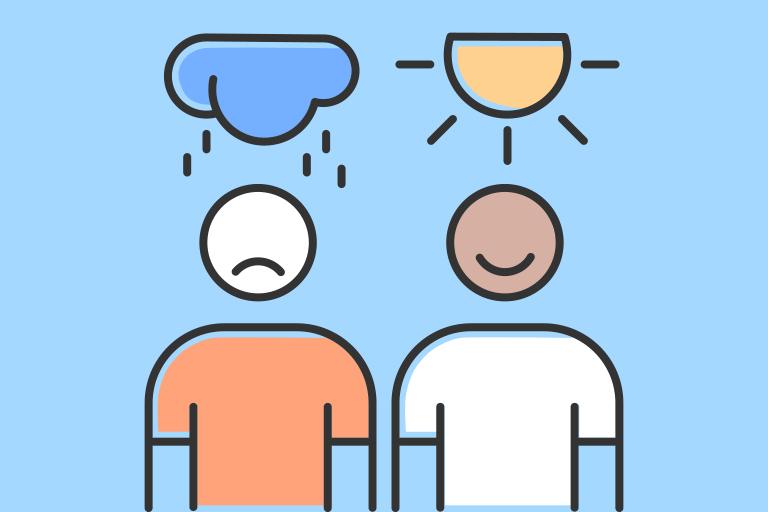A healthier me in 2023: The signs and how to combat seasonal depression
January 13, 2023
During fall and winter, a lack of sunlight can be associated with a negative mood. This has been backed up by research that explains how our body’s internal clock is conditioned to revolve around night and day. Our bodies are more alert when the sun comes up, and our bodies become weaker and drowsy when the sun goes down. During sunset, our bodies produce a sleep inducing hormone, melatonin, and they decrease the amount of serotonin production. Harmony Bay Wellness explains that serotonin is a neurotransmitter that regulates mood and sleep, so when serotonin isn’t being produced properly it can lead individuals to feel irritable and frustrated. These feelings could lead to seasonal depression.
Not only can gloomy days cause seasonal depression, but they can also cause something called Seasonal Affective Disorder. Seasonal Affective Disorder (SAD) is a type of depression that is related to changes in seasons. According to the Mayo Clinic, SAD begins and ends at about the same times every year; starting in the fall and continuing into the winter months, sapping your energy and making you feel moody. These symptoms often resolve during the spring and summer months. Most SAD cases cause depression in the gloomy months, but SAD can also cause depression in the spring or early summer. This type of SAD resolves during the fall or winter months.
Signs and symptoms of SAD may include:
- Feeling sad or down most of the day, nearly every day
- Losing interest in activities you once enjoyed
- Having low energy and feeling sluggish
- Sleeping too much
- Having difficulty concentrating
- Feeling hopeless
Although the gloomy months can impact our happiness, you can take steps to improve your mood and motivation throughout the year by doing the following:
- Make your environment sunnier or brighter (turn on lights, open blinds, sit closer to bright windows)
- Get outside (go for a walk and soak up the sun!)
- Exercise (helps relieve stress and anxiety which can increase SAD symptoms)
- Normalize sleep patterns (eliminate naps, stay consistent with the time you go to bed and wake up)

